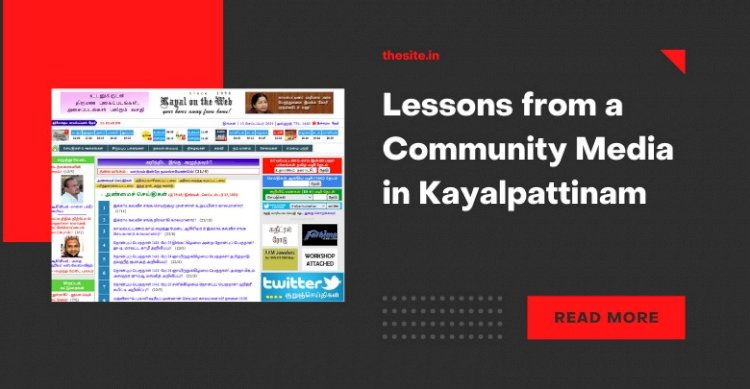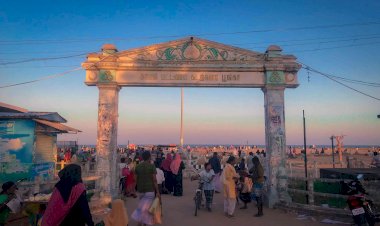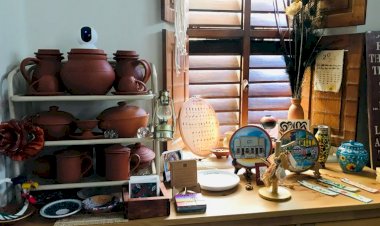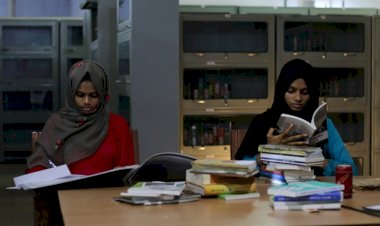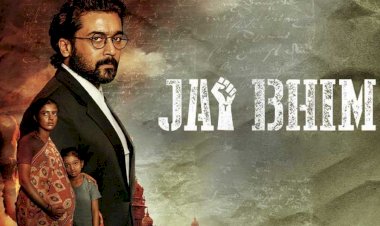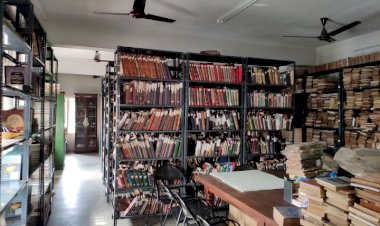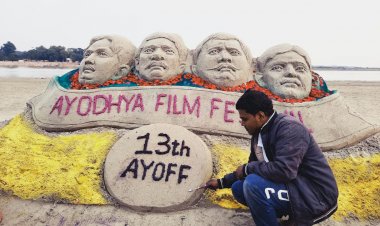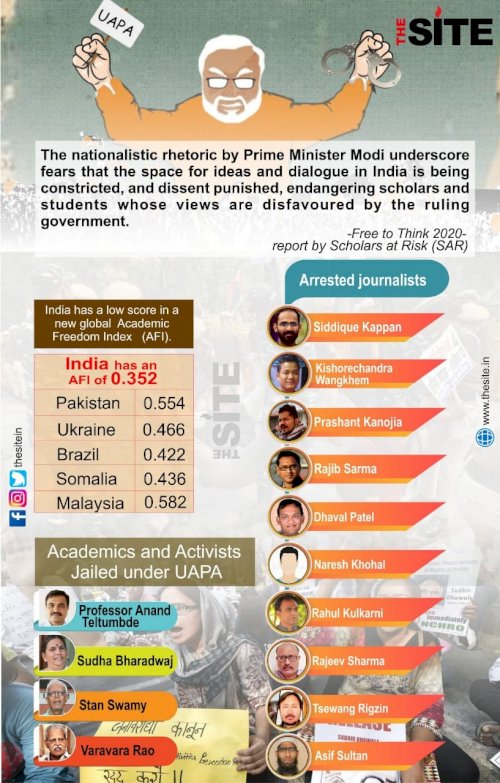Lessons from a Community Media in Kayalpattinam
A pro bono local news portal has been the centre of many civil movements in Kayalpattinam, inspiring the town in uniting NRIs towards constructive activism, fighting corruption in the Municipality, crusading against a toxic chemical company and a lot more. MUHAMMED NOUSHAD documents the inspiring story of kayalpatnam.com.
When the internet was still attempting its baby steps on Indian cyberspace, a few youngsters in a coastal small town in Tamil Nadu launched a community website for their town: kayalpatnam.com. It was way back in 1998 when giant metropolises were gasping at the Information Superhighway, in obscure and inaccessible awe. But, a young computer programmer and his friends in Kayalpattinam foresaw the technology’s worth for their historic hometown. Mohamed Salihu MS was the founder editor of kayalpatnam.com, a fascinating community media with a track record of inspiring initiatives for the town. To be precise, the prototype of the website, ‘Kayal on the Web’, a platform offered by a free server, had already been there since 1997.
A spelling dilemma mattered when the website was launched, as there are three different spellings for the town – Kayalpatnam, Kayalpattanam and Kayalpattinam. They chose the first for convenience and user-friendliness; however, as per strict lexical analysis, Pattinam fits better as in Tamil it means coastal town and Pattanam is any town. Many adjacent coastal towns on the Coromandel Coast go with the name Pattinam, too. Interestingly, there is no uniform official spelling, as the municipality uses both Patnam (on their office building) and Pattinam (on their letterhead).
Mohamed Salihu MS, the founder editor of kayalpatnam.com
MS Salihu was a web designer in Chennai, voluntarily doing the coding for the website. “Since 2000, we started publishing regular news, with the involvement of an internet café in town, called Master Computer Academy. Nobody had private access to the internet at home as people depended on cafes for surfing. Our main audience was expatriates,” says he.
Serving NRIs to Unite
The townsfolk started paying attention to the site when the team painstakingly uploaded the entire telephone directory of Kayalpattinam. The expatriates of the Kayal business community, stationed in remote cities in India and overseas, mainly doing gemstone business, immensely benefited from this. The team also started uploading occasional pieces on the history of the town, borrowed from various sources. Information on new births, deaths and weddings also had takers.
While reporting the local events and issues of Kayalpattinam, a predominantly Muslim town, the only editorial rule they strictly followed was to avoid getting into religious schisms and taking sides, mainly between the Sunni and Salafi schools. “We kept reporting their events, but avoided anything that would cause division or tension. Our focus was to report the town events, civil issues and corruption. We opened columns for established writers and also created pages where youngsters can post their creative writings and poems,” MS Salihu remembers the founding vision.
In the growth story of kayalpatnam.com, a remarkable episode was the Khutba broadcasting venture. The idea was to record the Friday sermon and upload it on the website routinely. Back then, there were only two masjids where Jumas were held: Periya Khutba Palli (the main mosque) and Al Jamia al Azhar (the Salafi mosque). Still, the task offered multiple challenges, but the team was inspired enough. Having recorded the speech by using an ordinary tape recorder, the cassettes were dispatched to Chennai, in a night bus, and digitised to MP3 the next day to be posted on the website. All jobs were done by a few committed volunteers and the risk paid well. The nostalgic expatriates listened to the Friday speeches sitting in faraway cities and kept on visiting the site in commendable numbers.
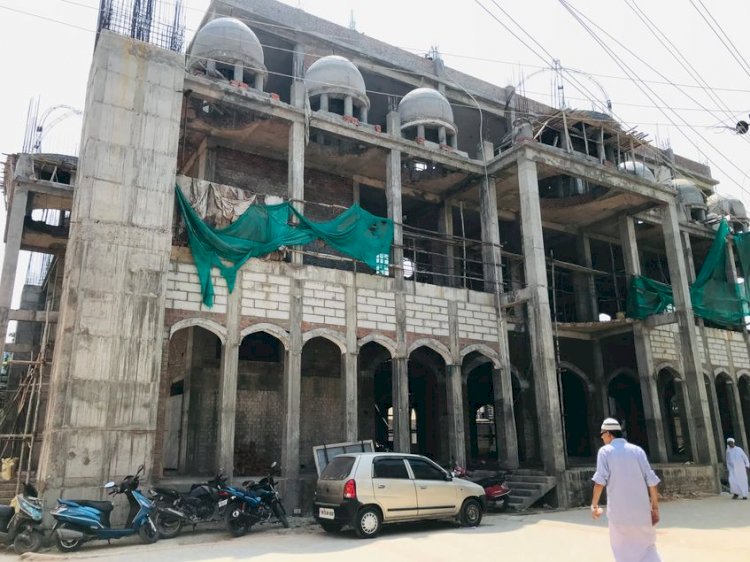 Kayal Periya Khutba Palli, renovation works in progress
Kayal Periya Khutba Palli, renovation works in progress
This hard labour of recording speech es on a cassette, dispatching it overnight to Chennai and digitsing went on for two and half years, uninterrupted. Later, more masjids opened up for Friday prayers and some of them now even have live-streaming khutbas. At present, there are six jumas in town and local channels live-stream even small dhikr gatherings either online or on cable TV.
“The best thing we did was that we unintentionally united the NRIs of Kayalpattinam. There are Kayal Welfare Associations in innumerable towns and cities in India and overseas and they used to send us news of their activities and we carried them regularly. It inspired each other to conduct more good events and support the community in better ways. The expats regularly visited our site and networked through us; we found that there were several people in different places with similar concerns and needs,” shares MS Salihu.
As a result of these extended discussions that went beyond the domains of kayalpatnam.com, new organisations and institutions were formed by likeminded people. One such striking example was the Iqra Educational Society.
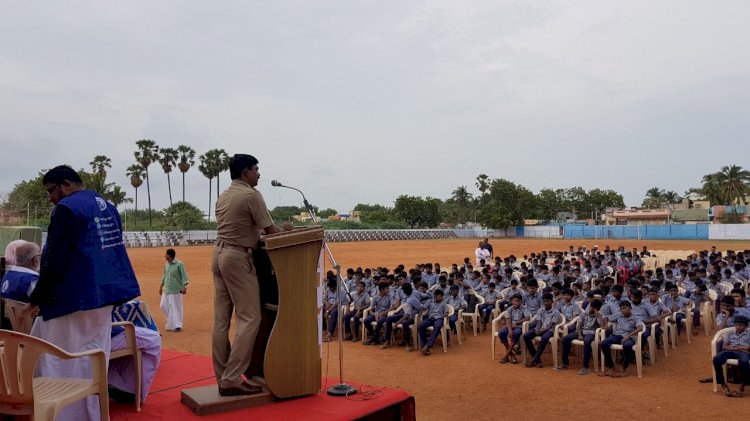 Inspiring the young generation of Kayal to aspire higher goals
Inspiring the young generation of Kayal to aspire higher goals
In 2006, MS Salihu and five other friends formed a body called Kayal First Trust to run the website. The town and its people have been their primary concern and the website was one of the means to serve them. They found it an urgent need to motivating the Kayal youth to pursue higher education. An annual event called ‘Meet the State Topers’ was planned, in association with Iqra Educational Society. The state toppers of Plus Two were invited and honoured, before a large young audience, annually, and Senior IAS, IPS officers and High Court judges spoke on the occasion. The local students giving public exams in town, X and Higher Secondary, benefitted from this one-day event for 11 years.
Battle for Health and Life
In 2010-11, the natives of Kayalpattinam became increasingly aware of alarmingly rising morbidity out of cancer. The civil society assumed that the reason could be the toxic effluents illegally dumped by the Dharangdhara Chemical Works (DCW) factory that was situated in nearby Sahupuram since 1959. DCW, owned by the Gujarat based influential Sahu Jain family, was one of the top suppliers of caustic soda and liquid chlorine in India, along with other products. The town leaders knew the fight was going to be long, but they had no choice.
A Cancer Fact Finding Committee (CFFC) was formed and it did a door-to-door survey to find cancer patients and mortalities, only to come up with frightening and convincing data. On the other hand, the company was planning to expand with new products in the pipeline.
DCW Factory at Sahupuram (image courtesy: dswltd.com)
From 2011 to 2014, CFFC ran a fierce campaign, through protests, creating awareness and attending public hearings. They were shocked to learn that the company’s effluent discharge in bulk quantity to the marine environment of Kayalpattinam was well-studied and documented even by government organizations like the Central Marine Fisheries Research Institute (CMFRI), years before. Kayalpatnam.com brought their study out on the public domain for the first time. “For a better and systematic fight against the factory, Kayalpattinam Environmental Protection Association (KEPA) was formed. We approached the pollution control board, went to the National Green Tribunal, we fought the case, though eventually lost it as we got certain assurances for the two years that the litigation was going on. Our success was that the company dropped the idea of expansion and setting up new firms in the region. Two new products got clearance based on certain conditions. Though the case technically ended, we still keep monitoring their activities,” remembers MS Salihu.
What the existing studies showed and the KEPA learned was that the company did not have scientific treatment plants. Instead, they kept the effluents in ponds and later illegally discharged them into the sea during the rainy season. SK Salih, the chief reporter of kayalpatnam.com took the pain to photo-document the effluent and its impact on the seashore. He went to the beach and clicked it from three different angles, every evening for several months, and posted them on the website. The colour of the sea changed from blue to red, on the days when the effluent was bulkily discharged. Through the images SK Salih religiously clicked, the people of Kayalpattinam were kept on alert. “People would protest when they see the sea in red colour; they wouldn’t even eat fish those days. I photographed the beach area for several months and whenever I was not able to go there, my friends clicked for our portal,” remembers SK Salih, who is also the chief reporter of Muslim League’s Tamil mouthpiece in Thoothukudi district.
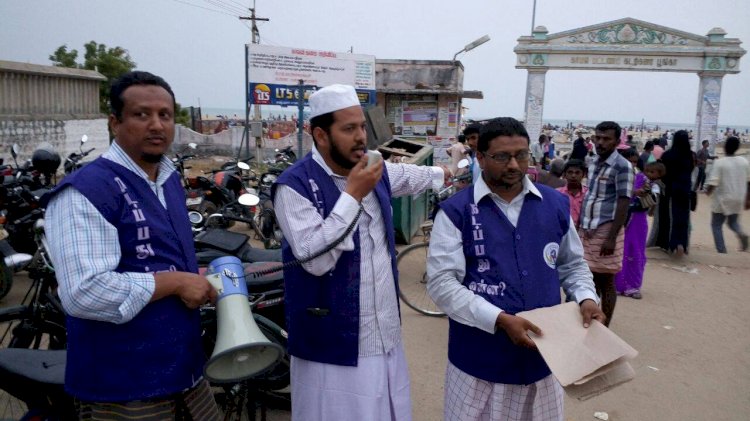 Volunteers at Kayal beach
Volunteers at Kayal beach
On a self-analytical note, MS Salihu adds that it is not very easy to mobilise people into the streets here. “People may be active in passing comments on the internet, but they hesitate to turn up on the street. So, we have to keep them informed and aware. We could organize huge protest rallies in town and the community responded very favourably. For us also, these agitations were a deep learning experience. We learned about several rules and acts, scientific facts, health issues, power dynamics and lot more.”
Fighting Corruption
Another worth-narrating episode in the story of Kayalpatnam.com is about fighting corruption in the local governing body. “We started covering corruption in the development schemes, construction works and tenders of the Municipality. As we started exposing political parties, we found rival websites coming up to challenge our coverage. That didn’t bother us. Our coverage made a deep impact in the 2011 local body elections. Till then, the system was such that the politicians supported by the local Jamats got unanimously elected and no political party intervened. We found this problematic as this led to corrupt practices. In 2011, there was women’s representation, and an independent activist leader called Abida won the election against the will of the Jamat. Our reporter SK Salih recorded every council proceeding on video and we uploaded them on Youtube against all odds; in fact, when we were restrained by the Municipality Commissioner from covering the proceedings, we approached the Madurai Bench of Madras High Court and won our right to do so..” MS Salihu remembers.
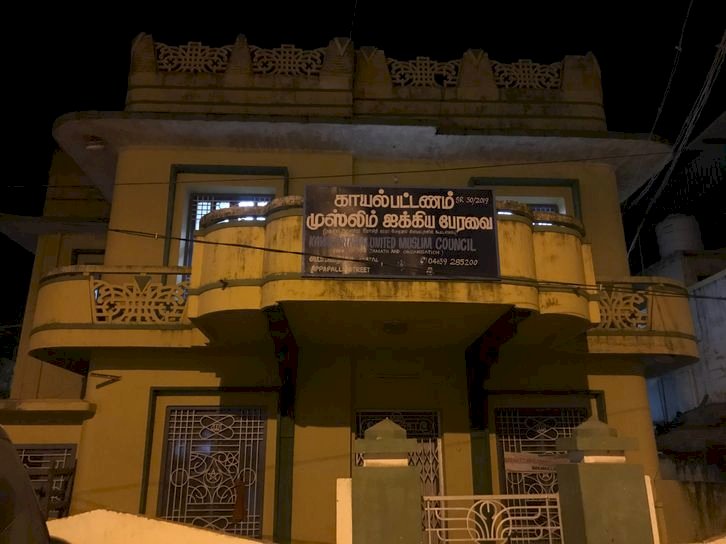 Kayalpattinam United Muslim Council Office
Kayalpattinam United Muslim Council Office
Abida’s term ended the hitherto unchallenged corruption in the Municipality fund allocations, in which both the ruling parties and the opposition used to connive. However, it is a different story that Abida had to take the tactical decision of joining AIADMK mid-way in her career to avoid undue harassment.
In 2016, when Abida’s term ended, her supporters wanted to continue the anti-corruption movement and sustain the spirit. The result was the formation of Mass Empowerment and Guidance Association (MEGA) where MS Salihu currently serves as the secretary. Sitting at its office in the main street of Kayalpattinam, he and his colleagues sort out innumerable files, official forms, formal applications, legal documents, campaign posters etc. all submitted either by the locals or on behalf of them. MEGA office shows you the proof of what they have been doing: campaign for Clean Kayal beach, encouraging locals to use govt. hospitals, blood donation camps based on WHO standards, career counseling, cyber literacy programmes, awareness on drug abuse, anti-corruption vigilance week, agitation against long-route buses bypassing the town etc.
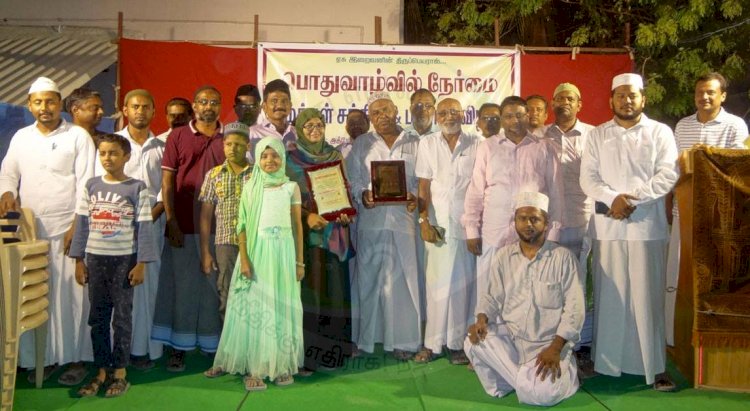 MEGA, an initiative to empower and serve
MEGA, an initiative to empower and serve
When Social Media Comes
However, Kayalpatnam.com has been on a decline in terms of traffic nowadays, admits both the editor and the chief reporter. Social media changed the scenario drastically for this popular community media. “When we started, there were no social media; in-depth news was our USP. Now attention span has gone down. And social media have changed the need for conventional reporting as everybody is a reporter and analyst today. When we started, there was no option to get local news,” opines MS Salihu. However, SK Salih hopes that the site could retain its popularity by adapting to the new times through competent modifications. “The website needs to be revamped in its appearance and features. It could be made more gadget-friendly by introducing App for easier use. We are planning this, but the main issue is that we lack time, as everyone is volunteering for this. Anyway, we have no plan to stop this venture. We know we are recording our town’s history. I have made my elder daughter learn Tamil and English typewriting so that she and her generation could continue the work tomorrow,” SK Salih, a trained acupuncturist and passionate journalist, adds.
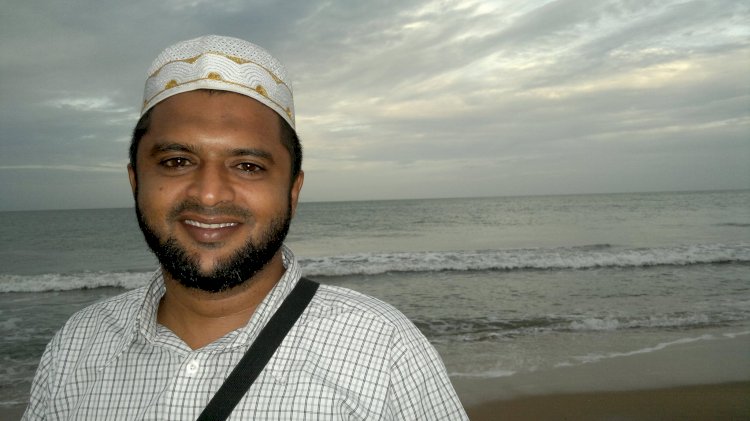 SK Salih
SK Salih
Obviously, many Kayalites cheer for the website, despite the social media boom. Arabi Haja Muhideen, a Hong Kong based Kayalite businessman and a seasoned community activist, says: “they have rendered a great service for the people of Kayalpattinam – both locals and expats – by continuously reporting the issues and events without bias and with openness. The website has always been committed to community welfare and even individual welfares. Whenever we the expats faced an issue, we contacted them and they always responded favourably.” Tamil author Salai Basheer, who writes a column in kayalpatinam.com, endorses the same. “Expatriates of Kayalpattinam are very proud of this town and very nostalgic also, wherever they go and live. They depended on the website to stay connected to the town. The website regularly published news and features to introduce the town’s writers, researchers, photographers, women accomplishers, any kind of talents. They have played a key role in raising critical social awareness in Kayalpattinam, by involving in different crucial issues,” says he.
This pro bono community media that delved deep into the genuine needs and pressing problems of a small town to tell its stories to its own people is in itself a remarkable story. One could see how voluntarism, philanthropy, political commitment and adaptability helped a community media grow and evolve to be more than a media house and produce several offshoots directly or indirectly, benefitting the community in varied ways.
[This is the fourth part of a series on Kayalpattinam, which comes under a documentation project on influential Muslim cultural centers in India. You may read the previous chapters here.]


